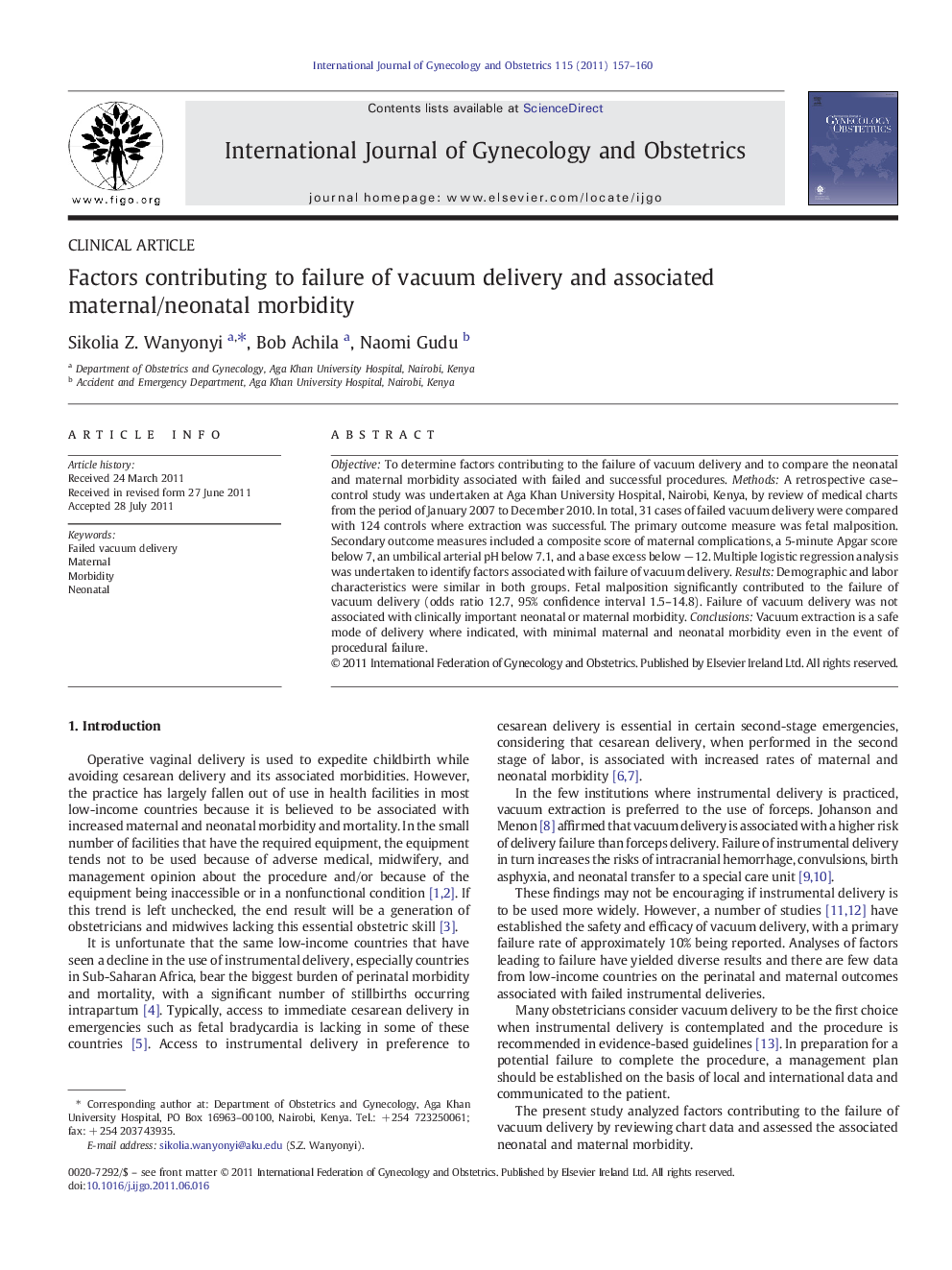| کد مقاله | کد نشریه | سال انتشار | مقاله انگلیسی | نسخه تمام متن |
|---|---|---|---|---|
| 3954373 | 1600367 | 2011 | 4 صفحه PDF | دانلود رایگان |

ObjectiveTo determine factors contributing to the failure of vacuum delivery and to compare the neonatal and maternal morbidity associated with failed and successful procedures.MethodsA retrospective case–control study was undertaken at Aga Khan University Hospital, Nairobi, Kenya, by review of medical charts from the period of January 2007 to December 2010. In total, 31 cases of failed vacuum delivery were compared with 124 controls where extraction was successful. The primary outcome measure was fetal malposition. Secondary outcome measures included a composite score of maternal complications, a 5-minute Apgar score below 7, an umbilical arterial pH below 7.1, and a base excess below − 12. Multiple logistic regression analysis was undertaken to identify factors associated with failure of vacuum delivery.ResultsDemographic and labor characteristics were similar in both groups. Fetal malposition significantly contributed to the failure of vacuum delivery (odds ratio 12.7, 95% confidence interval 1.5–14.8). Failure of vacuum delivery was not associated with clinically important neonatal or maternal morbidity.ConclusionsVacuum extraction is a safe mode of delivery where indicated, with minimal maternal and neonatal morbidity even in the event of procedural failure.
Journal: International Journal of Gynecology & Obstetrics - Volume 115, Issue 2, November 2011, Pages 157–160